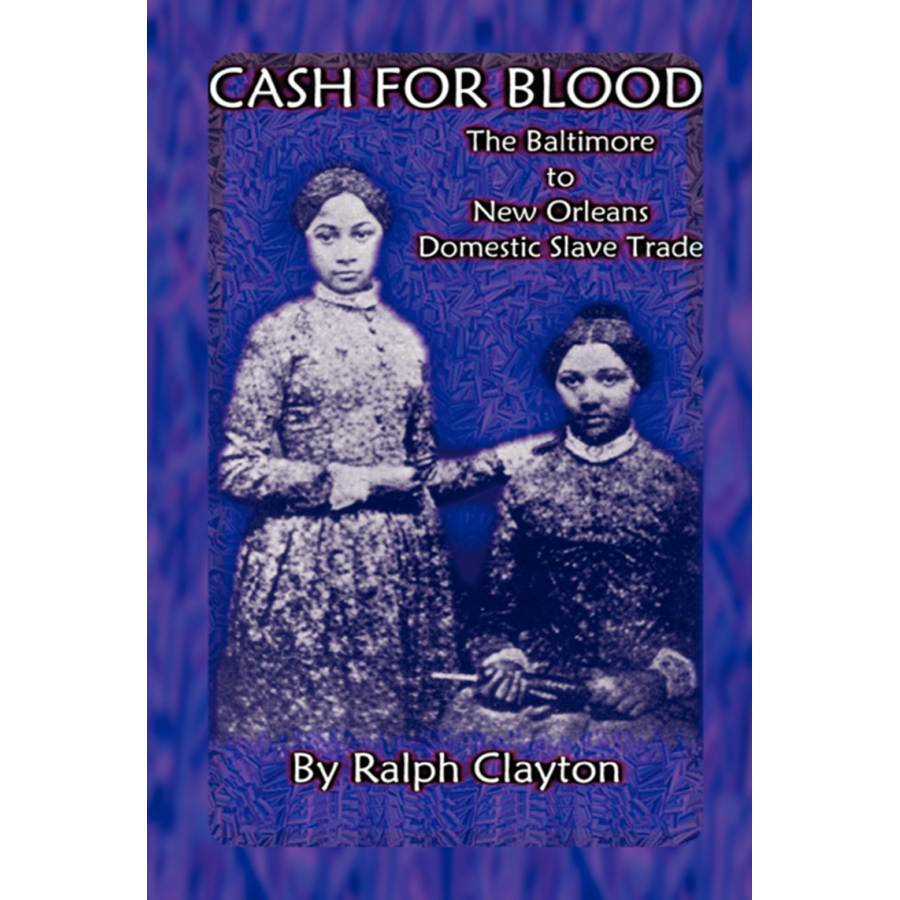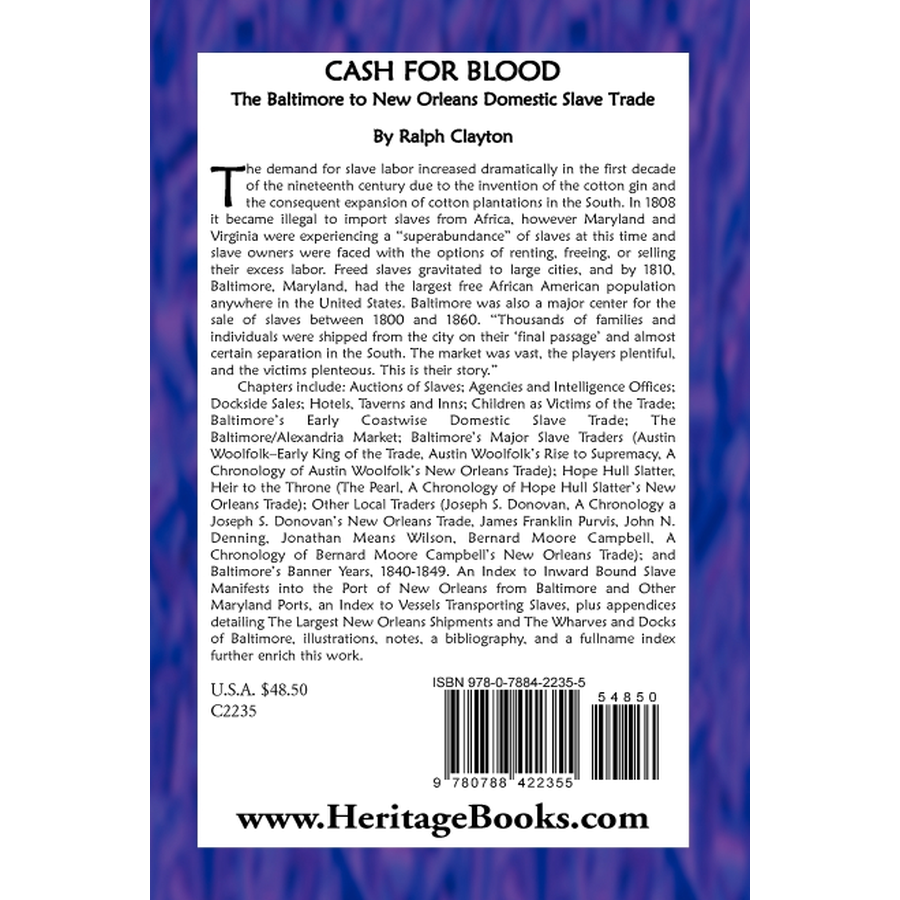Cash for Blood: The Baltimore to New Orleans Domestic Slave Trade
Couldn't load pickup availability
The demand for slave labor increased dramatically in the first decade of the 19th century due to the invention of the cotton gin and the consequent expansion of cotton plantations in the South. In 1808 it became illegal to import slaves from Africa, however Maryland and Virginia were experiencing a "superabundance" of slaves at this time and slave owners were faced with the options of renting, freeing, or selling their excess labor. Freed slaves gravitated to large cities, and by 1810, Baltimore, MD, had the largest free African American population anywhere in the US. Baltimore was also a major center for the sale of slaves between 1800-1860.
Thousands of families and individuals were shipped from the city on their 'final passage' and almost certain separation in the South. The market was vast, the players plentiful, and the victims plenteous. This is their story.
Chapters include: Auctions of Slaves; Agencies and Intelligence Offices; Dockside Sales; Hotels, Taverns and Inns; Children as Victims of the Trade; Baltimore's Early Coastwise Domestic Slave Trade; The Baltimore/Alexandria Market; Baltimore's Major Slave Traders (Austin Woolfolk-Early King of the Trade, Austin Woolfolk's Rise to Supremacy, A Chronology of Austin Woolfolk's New Orleans Trade); Hope Hull Slatter, Heir to the Throne (The Pearl, A Chronology of Hope Hull Slatter's New Orleans Trade); Other Local Traders (Joseph S. Donovan, A Chronology of Joseph S. Donovan's New Orleans Trade, James Franklin Purvis, John N. Denning, Jonathan Means Wilson, Bernard Moore Campbell, A Chronology of Bernard Moore Campbell's New Orleans Trade); and Baltimore's Banner Years 1840-1849. An Index to Inward Bound Slave Manifests into the Port of New Orleans from Baltimore and Other Maryland Ports, an Index to Vessels Transporting Slaves, plus appendices detailing The Largest New Orleans Shipments and The Wharves and Docks of Baltimore.
Ralph Clayton
(2002), 2007, 5.5" x 8.5", paper, index, 704 pp.
ISBN: 9780788422355
101-C2235

